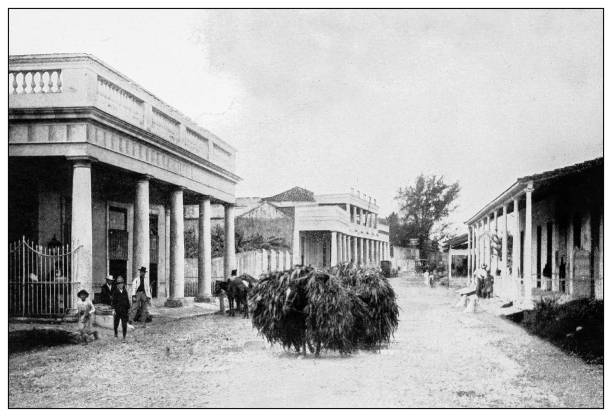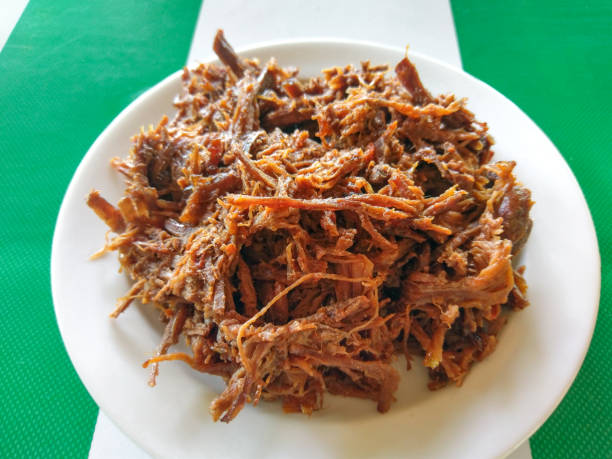Introduction to Cuban Peppers
The Cuban peppers are an important spice in the Caribbean food, they have a peculiar taste and range of piquancy. This type of peppers is common in Cuban recipes and has a mild sweet taste with an extended hint of spiciness and aroma that is suitable for many recipes.
Among all species known to humankind, Cuban peppers can by mild or even sharp, ranging from the tangy and mild to hot. Whether you are a home cook or a professional chef, it will be beneficial to learn Cuban peppers and how each of them can be used in cooking.
History and Cultural Significance of Cuban Peppers

The early indications to the use of Cuban peppers would be dated back to the skinny Taino people who were the early inhabitants of this region before the arrival of the Spanish. These products included peas, corn, beans, pumpkin, tomatoes, potatoes and peppers of which the last three were used as a staple food and in traditional medicine.
Through the Europeans who settled in Cuba the Cuban peppers have gone to the rest of the world to influence other peoples’ diets. Today these peppers are used in Cuban kitchen in dishes such as sofrito and mojo and ropa vieja.
Peppers are also grown in the country as part of their farming and as these crop is exported to different countries it has the potential to contribute to Cuba’s economy. As seen in the Cuban dish examples, it can be seen that they are the parts and parcel of the Cuban cuisine that convey its indigenous, African, and the Spanish essence.
Popular Varieties of Cuban Peppers
Ají Cachucha – The Sweet Heat
Juicy seeds contain Ají Cachucha, which is quite mild similar to the cherry bombs but with a sweet fruity taste. It looks like a habanero but is not very hot, it is an ideal one for people who do not like very hot pepper. This spice is used in almost all Cuban dishes including stews, rice dishes and sauces to give creativity to the regular Cuban dishes. It is also used in Cuban sofrito in flavoring many dishes, perhaps authentic recipes.
Cubanelles – The Mild and Versatile Pepper
Cubanelle peppers are used in Cuban cuisine primarily because they are almost mild in the heat and have a slightly sweet flavor. They are usually characterised by a thin skin and are crunchy and thus can be used for frying, stuffing, and grilling.
Substituting for bells, Cubanelles bring out the smoky flavors without masking other foods that they are combined with. These peppers are typical in Cuban type of stir fry, salads and sandwiches.
Habanero – The Fiery Favorite
This type of pepper origin from Cuba and is considered one of the hottest peppers, useful when added in so many recipes. Although they are extremely hot, they also come with the flavor of fruits and citrus fruit extracts making them ideal for hot soups and marinades.
In Cuban cooking, the habaneros are very sparingly used as a condiment in salsas, meats and even pickled. They are used to spice up any dish, making them quite popular among individuals who like their food ‘hot’.
Flavor Profile and Culinary Uses
There is a wide array of Cuban peppers which can be either sweet and mild or hot and smoky. It’s equally a delight that these chemicals are not confined to a strict dietetic usage but also in culinary uses. Whereas, mild ones such as Cubanelles can be used in sautéed dishes, salads and stuffed dishes whereas; hot varieties for example the habaneros are mostly used in sauces or marinades.
Ají Cachucha is perfect for slow-cooked stews and rice dishes They will give the food a delicate spicy/sweet taste. They are also perfect for making hot sauce, pickles and relishes that will give the dish the Cuban charm.
Health Benefits of Cuban Peppers
More to the taste of the Cuban peppers, they are also known to be very healthy. It also contains vitamins A and C which will enhance the body immune system and skin. Habeneros contain substances such as capsaicin that possess anti-inflammatory effects and can positively affect metabolism and facilitate weight loss.
A Cuban peppers also contain antioxidants that assist in protection of the body from diseases. It also has little water-soluble vitamins, fats, and calories making it suitable for people who are aiming to have a good health condition.
How to Choose and Store Fresh Cuban Peppers
In choosing Cuban peppers the right pepper should therefore have a tight skin, it should shine and have no bruises. Fresh peppers should possess a bright shiny skin, with no wrinkled and leathery skin and the peppers should firm to the touch. For impurities A store very unhealthy peppers in a plastic bags in the refrigerator, they can also be kept for up to two weeks.
Draining them or storing them in the refrigerator are some of the ways which people use in order to make them last for a long period of time they want them to last Some of the preservation techniques include freezing, drying, pickling. That way, its uses its taste and nutritive values are preserved to allow for future usefulness.
Essentials of Cooking with Cuban Peppers: Cuban Peppers in Recipes
Cuban Mojo Sauce
Mojo sauce is a sauce used by the Cuban people, and it is made with the use of citrus juice, garlic and Cuban peppers. They excellent in performing the role of marinade for the meats or as dipping sauce for any deep fried delicacies. Because of its essence of spiciness and garlic, it has become a classic dish in Cuban culinary tradition.
Ropa Vieja with Cuban Peppers
Ropa Vieja is another Cuban food whose ingredients include skirt or flank steak that is shredded and simmered in tomatoes, onions and Cuban peppers. The peppers also provide a hint of sweetness and spiciness to the dish which complements it in one way or the other. It is normally accompanied by rice and black beans.
Stuffed Cubanelles Recipe
Stuffed Cubanelles is a special meal whereby Cubanelle peppers are stuffed with a concoction of ground meat, rice and spices and baked to softness. Thus, this dish enables the natural sweetness of Cubanelles to shine while giving this dish a well rounded and filling meal.
Growing Cuban Peppers at Home
Peppers which are originally from Cuba can be grown in homes whether in a small or large scale due to their ability to grow in warm weather and require a lot of sunlight. These plants need well-draining growing medium and irrigation diligently on regular basis.
The peppers are grown from seeds, seedlings, and generally they take several months to fully ripe. As a matter of fact, with some taking good care of Cuban peppers you can harvest them at any one time of the year.
Cuban Peppers in Latin American Cuisine
La Ratilla de Gorron is also widely used is other Latin American recipes apart from those that are Cuban in origin. AJI CACHUCHA is a hot or sweet pepper that is an essential element in SOFRITO in both the Puerto Rican and the Dominican kitchen.
Habaneros are made use in Mexican salsas, while the Cubanelles find their way in Caribbean recipes. These features make it popular among Latin American chefs and house wives in their homes.
Where to Buy Cuban Peppers
The Cuban peppers can be bought from the Latin American supermarket, fresh produce market or other grocery shops selling such products. Some of the online stores also stock fresh and dried ones for those who wish to order for them. They are also suitable for home culture if you live in a warm climate to provide you with a steady supply.
Conclusion
The Cuban peppers are very popular in the Carribean and Latin America and are used in many recipes to add sweet, hot and fragranced flavor to various dishes.
There are so many of them, the preparation of which has its own unique and distinctive taste and using them is rather beneficial to human health. Most people relish the chili small or big; more so, the Cuban peppers give a whole new world in the culinary world.
FAQs
Q: Are Cuban peppers very spicy?
A: It depends on the variety. Cachucha is considered mild aswell as Cubanelle while the habanero is considered extremely hot.
Q: Is it possible to use some other type of peppers instead of the Cuban peppers?
A: Namely, bell peppers can be used instead of Cubanelles, whereas Scotch bonnets may be used instead of habaneros.
Q: The heat of spicy Cuban peppers can be reduced by soaking the peppers in cold water for a number of hours and subsequently washing it thoroughly.
A: The seeds and inner membranes of the cayenne peppers can also be scrapped off so as to deal with the spiciness issue.
Q: Are Cuban peppers good for health?
A: Yes they are because they contain vitamins, antioxidants and capsaicin which are mostly beneficial to the body.
Q: Where would be the best place to look for fresh Cuban peppers?
A: They are found in Latin markets, farmer markets and other food stores, as well as the internet stores.





